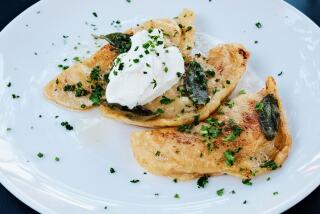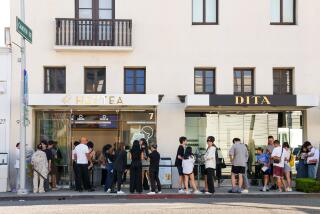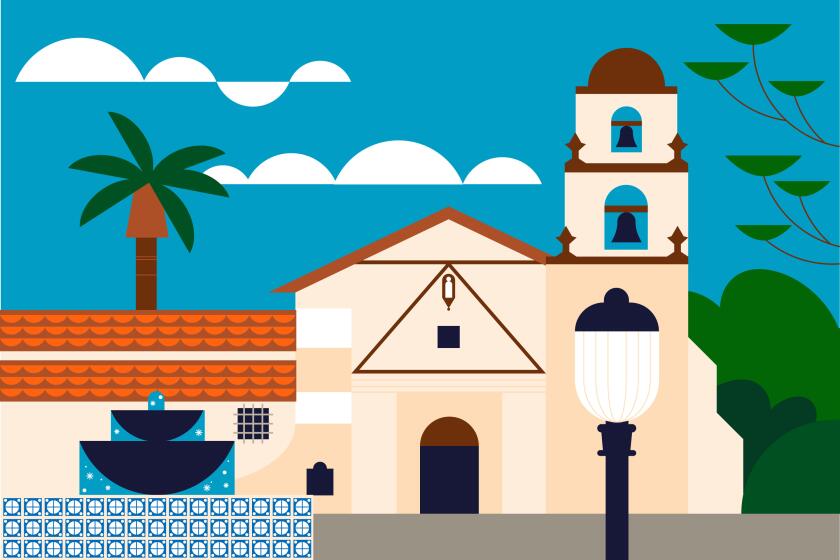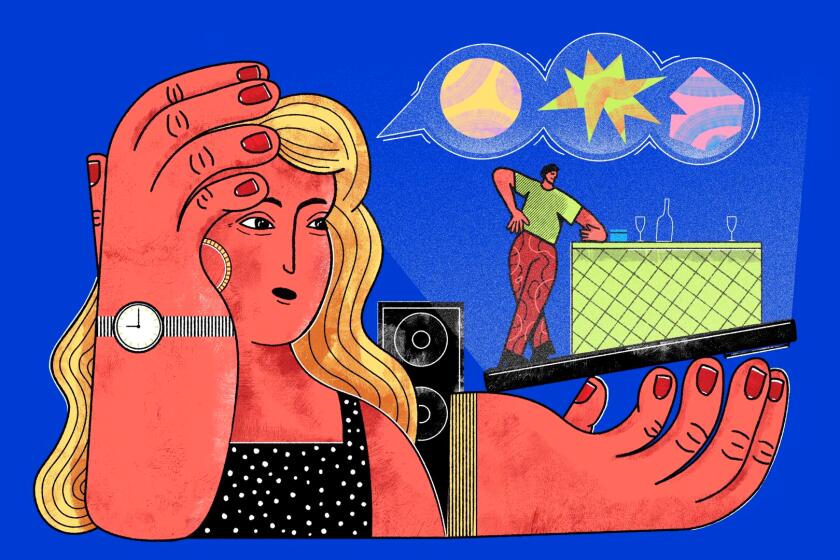That’s Right, Lodi
James Cameron couldn’t have scripted it better, the way 76-year-old Wanda Woock, grande dame of the Lodi wine country, pointed a finger at her gold brooch and then at a photograph of the very same brooch a hundred years back, glinting like pure Hollywood magic on a young woman’s lace collar. Peering out from a gilt frame on the wall of the rustic tasting room at Jessie’s Grove Winery, the young woman looked familiar. So I asked: “Is that you, by any chance?”
With a dramatic pause, as if she’d been waiting for this question, Woock smiled and said, “That’s my grandmother. That’s Jessie.”
While my brain ran the numbers, and recalled the grove of old-growth oak trees outside—Jessie’s, perhaps?—with its picnicking grounds among old farm buildings, my ear caught the sound of bluegrass on the stereo. Then Woock gestured to another photo and I got a weird tingling feeling, as if a door were about to creak open in the fabric of time. I had yet to taste the winery’s Earth, Zin and Fire, despite the brochure’s tease, “Our groovin’ zin is your stairway to heaven,” but already Woock was telling me about her great-grandfather coming from Germany in 1854, riding to California in a covered wagon, trading his horse for a useless gold claim, and then working so hard that he owned 1,000 acres by 1869. He’d built the barn we stood in by 1870, and planted his first vineyard about 10 years later. Woock’s grandson, Greg Burns, runs the winery now.
The wine, of course, is what brought me out here. A friend had left a bottle of red at our house, my wife opened it while I was running errands, and she called my cell to rave. Liz never raves about wine. She grew up in a food-and-wine-obsessed family, and took away the bedrock conviction that nothing good ever comes from overexcitement about food and wine. I live in a constant state of overexcitement about food and wine, and so the moment I got home, I poured a glass and read the label.
All it said was “Cigarzin,” which sounded like an obscure European principality, but when I slurped a mouthful I knew I had a serious data point toward understanding my wife. The wine was huge and velvety, with minimal puckering tannins or tart acids, and a dense, seductive rush of blueberry syrup.
While I sipped a second glass, I Googled. I learned that Cigarzin was the name of this particular Zinfandel blend—fruit paired with stogies, was it? It hailed from a winery called Cosentino that also produced a Lodi Zinfandel named, with blessed directness, The Zin.
I already knew that my wife’s father loved 7 Deadly Zins (by the same Lodi winemakers responsible for 7 Heavenly Chards), and so, with no greater ambition than to stock up on wines my wife could love, I drove on a Sunday afternoon out through the San Joaquin River delta, met Wanda Woock, and began understanding that Lodi is at the same time one of California’s oldest wine regions and its newest, the biggest in terms of the volume of grapes grown and one of the smallest in terms of the number of local wineries making Lodi-labeled wine.
As for the location of Lodi wine country, the nice version goes like this: If you follow the marine breezes through the Golden Gate and up through the tranquil waters of the north bay, and then over miles of bird-filled wetlands, you’ll come to a peaceful, Mediterranean flatland of old Zinfandel vineyards—Jessie’s Grove being the very oldest. The not-so-nice version puts Lodi wine country smack in between I-99 and I-5 in the heart of the Central Valley, bordered on the north by the Sacramento suburbs and on the south by sprawling Stockton.
Both are true, but if you tune out the old Credence Clearwater lyric (“Oh! Lord, stuck in Lodi again . . .”), surrender to the music of Lodi’s own self-image, and plot the drive accordingly, you’re in for a treat. The country highways radiating from the Bay Area take you right there, winding along the banks of the Sacramento, past shimmering eucalyptus trees under a sweeping sky.
Grapes grew wild around here when the Miwok hunted antelope and grizzlies prowled the foothills, and the first vineyards went in during the Gold Rush, in 1850. Prohibition shut down the wineries, but the law allowed for home winemaking, so Lodi grape farmers prospered in the 1920s by shipping grapes to the big cities. After repeal, those farmers kept it up, with a focus on grape farming instead of winemaking.
As the suppliers these days to Sutter Home, Gallo and Mondavi Woodbridge, Lodi growers are the giant silent partner in the wine industry, pumping out fruit for much of that “California”-labeled supermarket wine, and even for blending with fine wines sold under tonier regional labels, including those of the Napa Valley. But there’s a twist, and it goes a long way toward explaining why Lodi wine country is such an interesting destination right now. Consolidation has pushed down bulk grape prices and squeezed family farmers into reinventing themselves as winemakers, bottling their own fruit and getting in on the action. They’ve even divided the federally recognized Lodi American Viticultural Area into seven new sub-appellations. Jessie’s Grove and most of the other wineries lie in one called Mokelumne River, a prairie that straddles Route 12 west of downtown Lodi. That’s also where you’ll find the new Lodi Wine & Visitor Center.
“We just didn’t like the way the numbers were going,” said Brad Lange, of Lange Twins winery. “So my brother Randall and I, we called a family meeting, and we said, ‘Hey, we don’t think this business is going to survive for another generation. So either we start selling land for housing tracts, or we build a winery.’” Following the lead of other members of their Lodi generation, the kids voted for the latter, and they now bottle under both The Circles Edge and Lange Twins Estate labels.
Lodi wines are all over the map, but with common themes. The all-over-the-map part has to do with the area’s range of varietals. Cooler wine-growing regions typically focus on a handful of wines—Napa, for example, has become best known for its Cabernet Sauvignon. But warmer wine regions, including parts of Spain, Italy and the Rhone Valley in France, often grow and mix a number of varietals into quality blends.
Markus and Liz Bokisch were highly experienced outsiders who started in Napa and then worked in Spain before settling in Lodi as owner-operators. That dream would take monster money in Napa and Sonoma, but down here they found affordable land against the Sierra Nevada foothills and now they’re growing and bottling balanced and elegant versions of Graciano, Albariño, Garnacha and Tempranillo, all under their Bokisch Vineyards label.
Rip Ripken, an affable and comedic second-generation Lodi grape farmer who works alongside his two grown daughters, Madelyn and Sue, represents the Rhone, going nuts for uncommon varietals such as Marsanne, Roussanne, Carmine, Petit Verdot and Malbec. Drop into his little roadside barn, on a straight and quiet lane near the visitor’s center, and Ripken will gladly pour his “Rhonelicious Red” and lead you in his signature Viognier cheer. (“Give me a V! Give me an O! Give me a knee! Yay!”)
As for common Lodi themes, one is absolutely the way Lodi’s signature varietals—Zinfandel, Barbera and, to a lesser extent, Petit Syrah—taste. They’re massive, fruit-forward cocktail wines that slide like a warm blanket over the tongue, bloom into a plush mouthful of alcoholic berry syrup, and then ease on by without a hint of dirt, pucker or tang.
A few Lodi winemakers do produce classically structured reds with enough acid and tannin to give the wine a real backbone. Cosentino falls squarely into that camp, although it turns out that Cosentino is actually a Napa winery with a single Lodi vineyard and a Lodi tasting room. It also turns out that Cigarzin doesn’t have enough Lodi fruit to be designated as a Lodi wine, so my entire Lodi mission was the result of a dumb error during that first Google search. But by the time I realized this, while smacking my lips over Cosentino’s fantastic Cabernet Franc, it hardly mattered.
Another Lodi theme is the sheer unpretentiousness of the whole experience. The downtown has a cozy, small-town American vibe right out of the 1950s Midwest, and its citizens are so unpretentious that even when they try to be pretentious it comes off as unpretentious. Take Joe and Kay Berghold, who make forceful, traditionally structured wines. With the help of their winemaker son, Miles, they built a cavernous tasting room specifically to house their vast collection of Victorian antiques. But when you belly up to their main tasting bar, next to the Dolly Parton look-alikes and the big men in new Stetsons, tight Wranglers and their best cowboy boots, slurping Syrah, it’s hard to match the feelings of inadequacy you get at fancy Napa wineries.
Lodi winemakers typically come off as exactly what they are, which is either hard-working family farmers such as Jim Van Ruiten of Van Ruiten Family Wines or experimental young garagistes. At Vino Piazza, an old bulk wine facility on the eastern edge of wine country that now encompasses a dozen micro-winery start-ups, I found a rock-climber and kayaker named Tim Holdener pouring for visitors in the Macchia Winery tasting room. The wines were honestly fantastic, he’d made them all himself, and every single bottle, regardless of the vintage or the varietal, bore a one-word adjective to encapsulate the vibe: Mischievous, Voluptuous and Bodacious, to name a few.
Back over to the west, right on Route 12 beyond Jessie’s Grove, I found an even homier scene at Michael-David Vineyards, makers of 7 Deadly Zins. The Phillips family has been farming fruits, vegetables and grapes for eons, and they run a funky roadside café and produce stand, so in 1984, Michael Phillips started fermenting the family grape juice and selling it alongside the tomatoes. In 2000, along with brother David, he blended up seven different lots of Zinfandel, gave it that goofy name (which they say does well in the Bible Belt), and sold out their 800 cases in six months. Last year, they sold 100,000 cases of the same wine. But when I stopped in at the café for a bowl of tortilla soup, I found not a wine titan but a straight-up farmer in old jeans, battered work boots and an ill-fitting green T-shirt.
David Phillips led me to the “tasting room” for America’s fastest-growing label of Zinfandel: a cheap plywood bar beyond the pie case. Even with wine prices as high as $59, these guys keep their sense of humor. Opening a bottle of Earthquake Zin (“The Big One Has Hit!”), Dave told me a story that stayed with me all the way home. Apparently his older brother got the idea for the wine’s name from the vineyard where its fruit grew.
“He was, like, ‘Hey, Dave! The great thing is it was planted in 1908, and that was the year of the big San Francisco earthquake! Let’s call it Earthquake Zin!’ And I kind of scratched my head and said, ‘Gee, Mike, you know, I love the name, but I think that earthquake was in 1906.’”
Dave laughed at the memory, poured me a glass, and said, “But hey, it is a rocking wine.” And you know what? He was right, it was a rocking wine, and as I drove home with a few bottles for my wife, I found myself thinking again about all those kooky Lodi wine labels.
Before my visit, I had seen them as a bad omen for the quality of Lodi wine. Bumpkins, I’d thought. But after speeding up and down Lodi’s ruler-straight farm roads for two days, and meeting all those committed, hard-working and disarming farmers, focusing all their life’s energy on making great wine, I decided the opposite was true. They do have a playful way with naming their wines, in part because they have no stake in the pseudo-European pretension of most wine culture, and in part because they have an affinity for the mainstream wine drinker.
They take the actual winemaking as seriously as their ancestors took farming—which is to say deadly seriously, with a formidable will to make a first-rate and ultra-satisfying product. And when I got home and poured a little of that product for my skeptical wife, and saw the happy look once she’d gulped it, I knew that I had their target market right in my own bedroom.
Daniel Duane is the wine columnist for Men’s Journal.
More to Read
Sign up for The Wild
We’ll help you find the best places to hike, bike and run, as well as the perfect silent spots for meditation and yoga.
You may occasionally receive promotional content from the Los Angeles Times.










